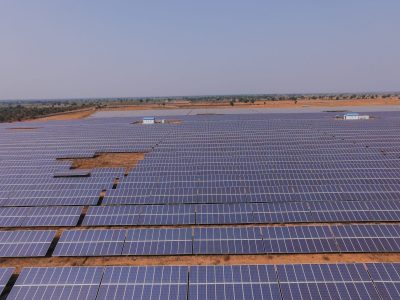The Future of Renewable Energy – Powering a Safer Future
As energy demands continue to rise globally, there is growing urgency around shifting to renewable energy sources that are clean, sustainable, and environmentally friendly. India, the world’s third-largest energy consumer after China and the US, has set ambitious renewable energy targets to meet over half of its electricity needs from renewables by 2030. This drive towards green energy presents enormous opportunities as well as technological and infrastructural challenges.
Solar and wind energy are leading India’s renewable march. Solar has seen meteoric growth from near-zero installations to over 40 gigawatts (GW) today, spurred by steep price declines and supportive government policies. Forecasts estimate India could add as much as 80-100 GW more solar over the next decade. Wind energy capacity already stands at around 39 GW and is projected to rise substantially as well.
Beyond solar and wind, India aims to ramp up other renewables like biofuels, small hydroelectric, tidal, geothermal, and waste-to-energy plants. It has set a target of 450 GW by 2030. As per official estimates, India has a renewable energy potential of about 900 GW from commercially exploitable sources, underscoring the possibilities ahead.
Driving Factors
What factors are propelling India’s future as a renewable energy powerhouse? For one, declining prices, especially for solar, have made capital costs affordable and installations economically viable. Generous government incentives like guaranteed pricing, subsidies, and tax breaks have also catalysed growth so far.
Moreover, India’s geography gives it an advantage in renewable energy. The long western and southern coasts allow for large wind and solar farms that leverage coastal connectivity to transmit power inland. Solar potential is high across India’s landscapes, given favourable solar irradiation. Local manpower availability also helps contain project costs.
Above all, environmental imperatives are pressuring India to curb its reliance on polluting fossil fuels like coal, which currently dominate its energy mix. Renewables will be essential for clean air and industrial growth. Energy security concerns and fluctuating global oil and gas prices further reinforce the need for domestic renewables to meet rising demand.
Key Challenges
However, many challenges remain in fulfilling India’s renewable goals and potential. Land acquisition issues have delayed projects, as farmers are often unwilling to part with acreage for solar and wind farms. Grid integration obstacles, like infrastructure deficiencies around transmission lines and storage solutions, have also hindered growth so far.
The hot tropical climate in parts of India can affect solar panel efficiencies and raise maintenance costs. Dust accumulation in desert solar plants reduces output considerably if not cleaned regularly. Wind farms also require large, continuous open tracts, which are getting harder to find amidst growing urbanization.
While costs have fallen sharply, additional investments in R&D, storage, the electric grid, and charging infrastructure must continue to make renewable energy affordable and accessible nationwide. Robust financing ecosystems have to evolve to fund capital-intensive projects. Skill shortages exist despite India’s engineering talent, impeding smooth adoption.
Finally, complex bureaucratic processes around environmental clearances, land permits, and electricity regulations pose administrative hurdles. Streamlining approval procedures could propel growth.
The Road Ahead
Notwithstanding near-term speedbumps, India’s future renewable energy pathways look promising. Market drivers, tech innovations, and conducive policies should catalyze solar and wind to double or even quadruple installed capacity over the next decade. Corporate investments look poised to rise substantially, given that business cases are becoming more compelling.
As exports pick up too, Indian solar manufacturers are gearing up for advanced products like high-efficiency cells, panels, and modules. Domestic wind turbine makers are also aggressively targeting foreign sales. Battery storage adoption and electric mobility growth will likewise spur related renewable energy expansion.
India stands on the cusp of a clean energy transformation that can drive energy security, environmental gains, and sustainable growth for its vast population. With the right long-term investments and policy implementation, the country could well become a global leader in renewables across research, technology, and production over the coming years.
As one of India’s oldest and largest solar panel manufacturers, Waaree has been at the forefront of making solar energy affordable and accessible since 1989. We currently have the capacity to produce over 2.5 GW of solar modules annually at our state-of-the-art facilities. Our expansive lineup of mono and polycrystalline PV panels is designed for rooftops and large-scale solar projects alike. What truly sets Waaree apart is our end-to-end project capabilities, spanning EPC services, customized solar solutions, operations and maintenance support, and fintech assistance.
With three decades of renewable energy leadership and innovation, we remain committed to realizing India’s full solar potential while meeting our global climate commitments. To learn more about how Waaree is powering India’s solar energy future with its comprehensive panel offerings and turnkey solutions, visit our official website today. Our team of experts is always available to understand your project requirements and design customized solar energy systems for maximum efficiency. Partner with us to light up a greener future today!
Post a comment
You must be logged in to post a comment.





